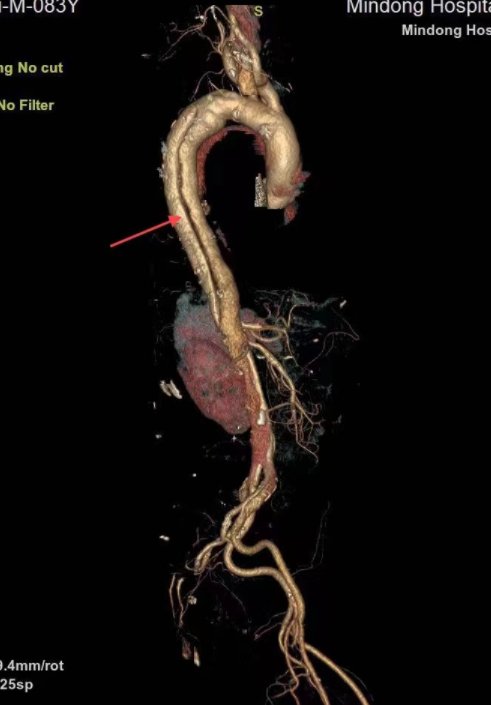The 82-year-old Mr. Huang from Fu’an,
has always had a dream in my heart,
hoping to go out on a trip by myself,
even once!
However, he has endured low back and leg pain for more than 20 years.
Every time he can’t walk 20 meters, he has to rest.
Can’t walk long distances.
In recent years, he has taken various treatment methods such as physiotherapy, Chinese herbal medicine, and painkillers, with little effect; There are many basic diseases such as arterial dissection and hypertension, and the disease control is not ideal. If surgery is performed, the tolerance is poor and the risk is high.
In desperation, Mr. Huang could only go home and continue to take conservative treatment.
Endured low back and leg pain for more than 20 years
The octogenarian insisted on surgery
Until March of this year, Mr. Huang’s low back and leg pain symptoms worsened, and he took long-term pain relief The drug gradually became ineffective, followed by soreness and numbness in both lower extremities and extremely difficult walking, which seriously affected the normal life of the elderly.
Finally, Mr. Huang made up his mind to solve the pain completely. A few days ago, accompanied by his family, he sought treatment at the Spine Surgery Department of Mindong Hospital of Ningde City.
Fujian Health Daily Health Ambassador and Chief Physician Wang Yue, Ningde Mindong Hospital Spinal Surgery, after receiving the consultation, inquired about the medical history in detail, and perfected the relevant examinations, it was clear that the cause of Huang Laobo’s low back and leg pain was the lumbar spinal canal Stenosis, long medical history, severe nerve compression, must be treated with surgery.
But the biggest problem is that Mr. Huang has many underlying diseases, such as chronic aortic dissection, heart failure, atrial fibrillation, hypertension grade 3 (very high risk), and the risk of surgery is extremely high.

The arrow points to aortic dissection
It is understood that aortic dissection is a Fatal cardiovascular disease, patients may be life-threatening due to blood vessel rupture and massive hemorrhage at any time, and the mortality rate is very high.
On the one hand, Mr. Huang’s physical condition is extremely poor, and on the other hand, he suffers from unbearable chronic diseases. After full communication, Mr. Huang and his family chose to trust the doctor and decided to give it a go and insist on the operation.

Subsequently, Fujian Health Daily Health Ambassador, Chairman of the Orthopaedic Branch of Ningde Medical Association, and Department of Orthopedics, Mindong Hospital, Ningde The leader, Chief Physician of Spinal Surgery Wang Chun, and Chief Physician of Spinal Surgery Wang Yue organized a team to discuss cases, formulate a detailed surgical plan, and cooperate with interventional vascular surgery, anesthesiology, cardiology, respiratory medicine, critical care medicine and blood transfusion. The department carried out multidisciplinary joint consultation and collaboration, and successfully performed surgery for Mr. Huang.

Director Wang Chun said that according to the patient’s general condition, if the traditional surgical plan is used, it will not only take a long time, but also cause a lot of bleeding. , the damage is large, and the surgical risk is extremely high.
Therefore, in view of the characteristics of patients with spinal canal stenosis that is skewed to the right, a multi-segment unilateral approach and bilateral laminar decompression and internal fixation are used during the operation, which can effectively reduce the time of anesthesia and operation, and reduce the operation time. reduce the risk of surgery.
After the operation, Mr. Huang’s waist and leg pain symptoms improved significantly. On the 3rd day after the operation, he was able to walk on the ground with the support of his family. One week after the operation, he was able to walk independently with the aid of a walker.
The elderly should be vigilant against lumbar spinal stenosis
“Lumbar spinal stenosis occurs mostly in middle-aged and elderly people, due to various factors such as herniation of the intervertebral disc, thickening of the ligamentum flavum, and facet joint cohesion. Lumbar spinal degenerative factors cause neural canal stenosis and lumbar spinal nerve compression, resulting in a series of waist and leg pain symptoms.” Wang Chun reminded that the incidence of lumbar spinal stenosis is generally high in people over the age of 50-60. It increases with age, the onset is mostly insidious, and the course of the disease is slow.
Typical symptoms may include:
Long-term lumbosacral pain, leg pain, progressive weakness and numbness in both lower extremities, intermittent claudication, difficulty walking, and in severe cases, abnormal bowel and bladder , paraplegia, etc.
If the above symptoms occur, be alert. Lumbar spinal stenosis varies in severity and treatment.
The treatment method needs to be comprehensively analyzed according to the condition, symptoms and pain score. When conservative treatment fails, surgical treatment should be considered.
Fujian Health News All Media Reporter: Zhang Shuai
Editor: Xiao Feng
Reviewer: Huang Meihui, Zhu Xiaojie
